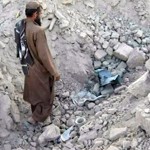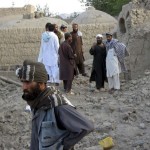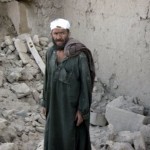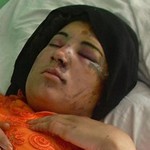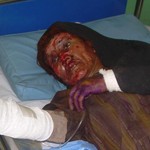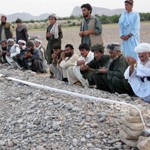| All nation states are founded on the nationalist belief that each nation has a specific claim to a specific territory. Nationalists can and do recognise other nations claims to other territories, but almost all make an exclusive claim to at least some territory. This claim is, by definition, an expression of group superiority. The members of the nation, according the nationalist movement in question, possess an inherently superior claim to the territory, purely by membership of the group. They do not have to do anything for it. The claim covers not only their claimed right to live there, but their claimed right to exclude others. There is one exception to this pattern: the diaspora nationalism of the Roma. The Roma do not know exactly where their ancestral homeland is located. Therefore, in sharp contrast to other nationalist movements, Roma nationalism does not claim territory. And until they know where it is, Roma nationalists can not attempt to expel the existing inhabitants of that territory. All existing nation states do make a claim of superior right to national territory. In all cases, this claim is made on behalf of a single ethnic group, or a cluster of ethnic groups (titular nation plus national minorities). That the groups are ethnic is the source of most of the racism in ideology and policy. If states were exclusively founded on gender, their ideology might be sexist, but not racist. Conversely, all nation states claim that other groups do not possess that specific right to the territory in question. Irish nationalists believe that the 'Irish people' have a superior right to the island of Ireland, and that the Paraguayan people do not possess this right. They believe that individual Irishmen and Irish women are the bearers of this collective right, and that these individuals can not be denied the right to reside in Ireland. They they do not believe this about randomly selected individual Paraguayans. Ireland has no indigenous ethnic minorities so the definition of the nation is relatively simple. However these beliefs can be held on behalf of more than one national group, but never on behalf of all nations of the world - at least not in any existing nation state. The formal expression of these underlying beliefs is the citizenship and immigration policy of the nation states. Note that nothing stops Irish and Paraguayan nationalists from respecting each others claims, especially since they have no common disputed territory. However, that does not make their claims any less racist. It is often said, that the nation states have widely differing conceptions of citizenship. In fact they all operate in conformity with these two principles of superior claim, and legitimate exclusion. All existing nation states share two other characteristics. No nation state has an absolute open-border policy (totally free immigration), and all nation states allow the acquisition of citizenship by descent. These four characteristics allow Zionism to be considered racist - in the company of other nationalisms, including the quasi-official ideologies of each nation state. The superior claim to national territory is the attribution of a superior quality to members of the national group. The denial of this claim to certain other ethnic groups is the attribution of an inferior status to their members. The lack of an open-door immigration policy means, that these claims are translated into real exclusion. Finally, the acquisition of citizenship by descent is a purely biological mechanism: it is racist in the general sense, but it is also closest to the biological ideologies first described by the term 'racism'. French and German attitudes are said to represent the extremes of citizenship policy, but in fact both states share a biological concept of citizenship. Both illustrate this core policy, despite their differences in emphasis. Germany has a generally restrictive immigration policy, which it relaxed in the 1960's and 1970's to allow labour migration for (West) German industry. The children of the many Turkish immigrants grew up in Germany as foreign citizens, with a Turkish passport and a German residence permit. Even the third generation, often born in Germany of German-born parents, usually speaking only German, were still Turkish citizens. If they committed a crime they were liable to be deported to Turkey, even if they did not speak a word of Turkish and had never been there before. Only in the last few years has naturalisation become almost automatic for the third generation. In contrast, descendants of Germans who settled in eastern Europe, sometimes two or three centuries ago, can arrive in Germany and claim full citizenship. It is not necessary that their parents are German citizens, and they are not required to speak a word of German. The German state will pay for their full integration in German society, because they are considered part of the German 'Volk'. French policies are based on different assumptions, about the effectiveness of French society in transferring its own core values. Living in France for a long period, or growing up in France, is considered to effectively assimilate the migrant or the child. (There is an underlying belief in the self-evident superiority of French values). Naturalisation is therefore easier, and in principle birth in France confers citizenship - but the parents must get there first, for the child to be born there. However in both cases a basic rule applies, which undermines the French pretensions to have a 'non-racist' citizenship and nationality policy. The child born of citizens is a citizen. All existing nation states apply this principle, usually without regard to place of birth. The child born to a French-citizen mother and a French-citizen father, in Zambia, is a French citizen. The child born to a German-citizen mother and a German-citizen father, in Zambia, is a German citizen. No special procedure is required of either the parents or the baby, and no supplementary qualifications. The child of Zambian parents, who have no German or French ancestors and no connection with Germany or France, can make no claim on the citizenship of these countries. Both doors are equally closed. That essential inequality is by definition racist. As an adult, the Zambian child can later try to enter either country, and acquire citizenship. That means going through a special procedure, and meeting certain norms, for instance on educational level. Ultimately, acquiring citizenship might be easier in France, but there is no guarantee there either. This is the reality of nation states: most people got their citizenship from their parents, and they did nothing for it. They certainly did not have to cross the Strait of Gibraltar in a small boat, and spend 10 years picking tomatoes or cleaning toilets - which is what a Zambian might do to acquire legal residence in an EU country. In other words the average citizen, certainly in the richer countries, is complicit in a grand racist scheme. They benefit greatly from their privilege at birth, while others lose horribly. That is presumably why they don't like to talk about the issue, but in terms of human suffering this is the worst aspect of the inherent racism of the nation states. If adults in a western city were arrested, and condemned on the basis of their ethnicity to the typical conditions of life in rural Africa, it would be considered a crime against humanity. Origins and definition of Zionism The racist characteristics of nationalism can be found in the Zionist ideology and in the State of Israel, a nation state. The word Zionism is used today for the foundational ideology of the Israeli nation state - the claims by which it justifies its existence. However Zionism as a nationalist movement is older than that state: past and present Zionism do not always coincide. Zionism is a diaspora nationalism of the Jewish people. In a diaspora nationalism, most members of the national group are not resident on the claimed national territory, and the nation state can only be achieved by 'return' migration. Zionism is an unusual nationalism: it is largely the creation of a single individual, Theodor Herzl. He was the first to make a public claim to a Jewish State, and promoted that idea in Europe. His work reflected the general climate of nationalist revival movements in eastern Europe at the time, especially in the Austro-Hungarian empire. It was almost inevitable, that a Jewish movement would identify Jews as 'a people' when all around them Germans, Poles, Czechs, Slovaks, Ruthenians, Slovenes, Croats, Serbs, and Hungarians were doing the same. The other historically possible options - a purely religious revival movement, and an emancipation movement - were side-tracked. Zionism is also unusual because, in the early years, there was no clear idea of the national homeland. There was a clear territorial concentration of Jews in Europe, in what is now Poland, Belarus, the Ukraine and southern Russia. However, except for local concentrations, they were in a minority even in this territory. The idea of a Jewish nation state in eastern Europe was never influential in Zionism. Some of the early plans for Jewish resettlement were not even formally nationalist: they made no claim to a state. Resettlement in a British colony, such as Uganda, was for a time the most serious option. The negotiations came to nothing - but the idea influenced British policy, when Palestine became a British mandate territory, after the First World War. By the time of the Balfour Declaration, Zionism was a standard nationalist movement. Zionists claimed to speak on behalf of a people, the Jewish people. They claimed a nation state for that people in Palestine, on the grounds that it was the historic homeland of the Jewish people. The 'Jewish people' for almost all Zionists was (and is) an ethno-national group - and not a religious community. A minority of religious Jews still opposes Zionism for religious reasons. Zionism in the State of Israel When the State of Israel came into existence, it included a mainly Arab minority, now about one million people. Historically Zionism has never recognised any 'national minority' within the nation, the status of (for instance) the Frisians within the modern Dutch nation. For Zionists, the Jewish people is the Jewish nation: Zionism is a mono-ethnic nationalism comparable to Irish nationalism. The present State of Israel generally has the constitutional structure of a secular nation state. It has conceded citizenship to the 'Israeli Arabs', although many will identify themselves as 'Palestinians'. However there is no tradition in Zionism which sees this group ('Arabs' or 'Palestinians') as a constituent minority of the Jewish people. Although many Zionists claimed the territory where Yasir Arafat lived, no Zionist ever saw him as a Jew. There is also no nationalist movement to establish a bi-national state on the former mandate territory of Palestine. Zionism is not such a movement, and the State of Israel does not claim to be a bi-national state. In this respect, Zionism is comparable to Czech nationalism or Slovak nationalism - not to Czechoslovak nationalism.. No Zionists call themselves Palestino-Jews or Judaeo-Palestinians. The State is called Israel, not Filastino-Israel or Israelo-Filastina Within this framework, which includes contradictory ideas about Israeli citizenship, the four racist characteristics can be identified. Firstly, the Zionist movement historically made a claim to territory on behalf of 'the Jewish people', an exclusive geopolitical claim. It claimed that individual Jews had a right to residence in that territory, which did not apply to randomly selected non-Jews outside that territory. None of the early Zionists advocated the ethnic cleansing, which in fact preceded the establishment of the State of Israel in 1948 - but none of them believed that non-Jews had a right to the Jewish homeland either. Zionists attribute a superior quality to Jews, namely the exclusive right to the Jewish national territory. The State of Israel, by definition, claims Israeli territory for Israeli's. It attributes a superior quality to Israeli's, although paradoxically that includes the Arab minority with Israeli citizenship. However, the State of Israel is not 'Israelist' - in the sense of consistently presenting these claims for both its Jewish and Arab citizens. In official pronouncements, such as its defensive speech to the Durban anti-racism conference, Israel continues to claim state legitimacy as the national homeland for the 'Jewish people'. It is therefore not correct to say, that in Israel Jewish diaspora nationalism has been succeeded by Israeli nationalism. The legitimising ideology of Israel is still largely Zionism, and not 'Israelism'. Secondly, Zionism attributes an inferior status to members of non-Jewish ethno-national groups: that they lack the absolute right to residence in the Jewish homeland, and to citizenship of a Jewish nation state. The State of Israel confers no right of residence or citizenship on persons born outside Israel, unless they have specific links to Israel, to the Jewish people, or to Judaism. That excludes about 99% of the world population. The only exception to the general pattern of nationalist exclusion is, that the State of Israel extends citizenship to the historically resident Arab minority. However, some groups in Israel dispute even their right to residence, and propose their expulsion as part of a 'peace settlement' - together with the expulsion of Palestinians from all or part of the occupied territories. According to a 2003 opinion poll in Israel (Jaffee Center for Strategic Studies), 31% now support the expulsion of the Arab minority, and 46% support clearance of the territories. The most obvious exclusion, which was not foreseen by the early Zionists, is the status of the Palestinians in the occupied territories. Theodor Herzl never imagined that a Jewish state would be an occupying power, and therefore the de facto government, for a large non-Jewish population. In addition, about three million people belong to the clearly identifiable 'Palestinian-refugee' minorities, in other Arab countries, although most were born in their present country of residence. The State of Israel clearly attributes an inferior status to this population: namely that they do not possess the right to Israeli citizenship. This population is generally equivalent to the 'Palestinian people' in the occupied territories, although it includes small non-Jewish, non-Arab minorities. The members of this population, (primarily Palestinian), can not vote, for instance, and if they did all vote in Israeli elections, it would mean the end of the State of Israel. Again it is true that all nation states operate this exclusion, and none of them extend citizenship to everyone, certainly not to hostile populations. That does not make such policies any less racist, since the exclusions are by definition on ethnic or national grounds. That would not matter so much, if Israeli borders were open to all immigrants: but they are not, and this is the third racist characteristic of Zionism. Israel has one of the highest immigration rates in history, but immigration policy has always been restrictive. Although Israel grants citizenship to the resident Arab minority, it does not permit Arab immigration, even by former residents of its territory. Only those who stayed in their villages in 1948 got Israeli citizenship: those who crossed the front line to the Arab side can not get back - not as a citizen, and probably not as a visitor. Other Arabs, who have no connection with Palestine, can not simply migrate to Israel, nor can most of the world's population. Israeli immigration is essentially for Jews only, and this is the most obviously racist policy of present Zionism. In this case, the State of Israel has a formal and explicit policy of Jewish immigration, which is clearly Zionist. It is the logical consequence of the original Zionist demand for a Jewish state formed by migration, meaning migration of Jews. In one respect Israeli policy differs from most national immigration policies: citizenship can be indirectly acquired on religious grounds. A person who converts to Judaism can be a Jew in the sense of the Israeli Law of Return, if the conversion is accepted as valid by religious authorities in Israel. The convert can then go to Israel (entry can not be legally refused), and can claim Israeli nationality and citizenship. Sometimes this is quoted by Israel's supporters, to show Israel is not racist. In theory, all the inhabitants of the Palestinian territories can sincerely convert to Judaism tomorrow, and on acceptance of their conversion move to Israel. - where they will all presumably live as good and prosperous Israeli citizens. In practice this is absurdly unlikely. And the question is: why should they have to convert to Judaism, when native-born atheist or Buddhist Israelis can still be part of the Jewish people? This is the fourth racist characteristic, equally present in the state policies of Israel and present Zionist belief. It was not very relevant for the early Zionists, who were too far from a Jewish state to think about its future citizenship policy. Nevertheless, it was predictable even at the time Herzl wrote, on the basis of the general characteristics of European nation states (and of the Austro-Hungarian empire where he lived). The child of an Israeli citizen mother and and Israeli citizen father is an Israeli citizen. (I am not sure if this applies to the children of Israeli Arabs, born in the occupied territories). The child acquires this privilege without effort: no application under the Law of Return, no conversion to Judaism, no other qualification for citizenship. The child simply acquires the rights (and duties) of an Israeli citizen through unconscious biological process. The child without this biological advantage (birth, or parentage, or genetic material) does not automatically acquire citizenship. Life in Israel is not always pleasant, and many western Jews hesitate to emigrate there, but within the region an Israeli-born child has the advantage. The child born to Israeli settlers in central Hebron will statistically live longer, be better educated, and have a higher standard of living, then the Palestinian child born in an adjoining house. This advantage is part of the general advantage of being born in a rich country, which about one-fifth of the world's population share. In citizenship and immigration issues, biology determines fate. Not inevitably, but because nation states are structured that way. There is no inherent moral reason why states should limit immigration, or residence, or citizenship, simply on grounds of birth. In fact, it is hard to think of any moral justification for it. It is clearly racist in the general sense of the word, and its derivation from the ideology of nationalism indicates the racist origins of that ideology. The nationalism underlying the nation state Israel, which is accurately called Zionism, is no different in this respect. Here too, Zionism is racist. |






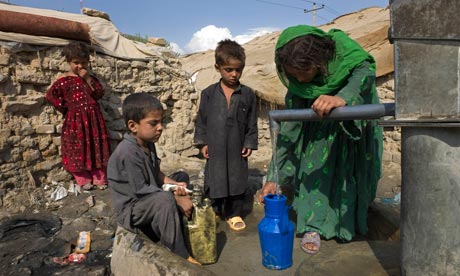 A shortage of clean water and no proper sanitation are two of the most severe problems affecting refugees living in the Parwan-e-duo slum, Kabul, Afghanistan. Photograph: Jason P. Howe/Oxfam
A shortage of clean water and no proper sanitation are two of the most severe problems affecting refugees living in the Parwan-e-duo slum, Kabul, Afghanistan. Photograph: Jason P. Howe/Oxfam 

